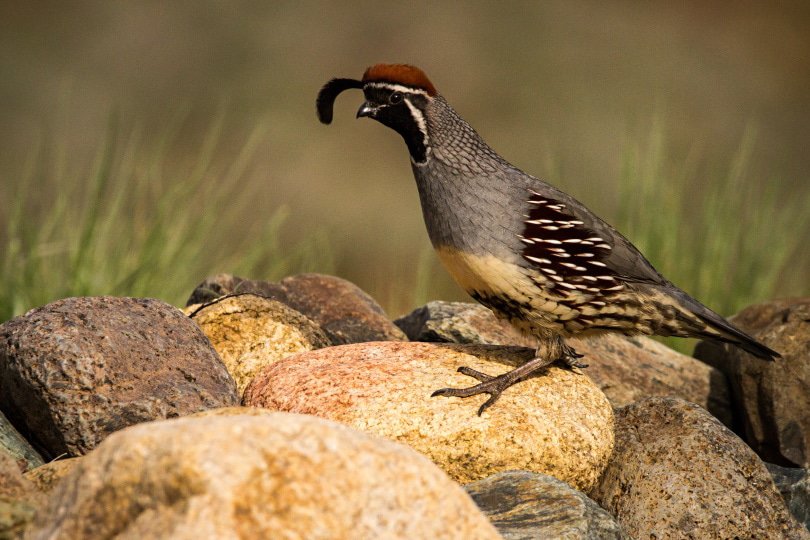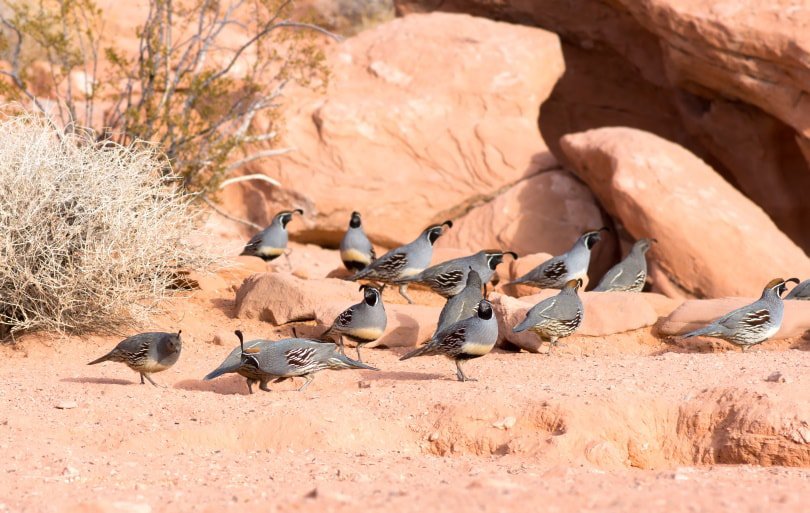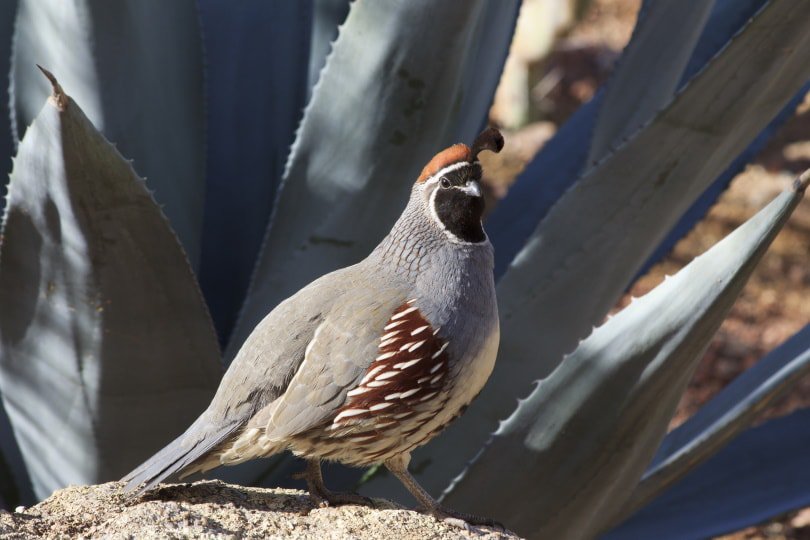The Gambel’s Quail is a small bird with a plump body and easily recognized by the black crest at the top of the head and the “scale” pattern of its grayish plumage. This bird is not known for its flight, preferring to live on the ground and feed on plants and seeds. On the other hand, this New World quail can move surprisingly fast among the brushwood of the desert regions of the United States. Moreover, although some species of quail are bred in captivity for their flesh and eggs, it seems more common to keep Gambel’s Quail as a pet rather than for the properties of its meat.

Quick Facts About The Gambel’s Quail
| Scientific Name: | Callipepla gambelii |
| Country of Origin: | United States |
| Uses: | Pet, hunting |
| Size: | Up to 12 inches |
| Lifespan: | 1.5 years in the wild; up to five years in captivity |
| Climate Tolerance: | Can tolerate almost all climate but prefer desert regions |
| Care Level: | Not recommended for novice quail owners |
| Egg Color: | Dull white with irregular patches of brown |
| Egg Weight: | 8 to 13 grams |
| Egg Productivity: | 10-12 eggs |
| Flying Ability: | Poor |
| Special Notes: | Sedentary bird, rarely seen in flight, hardy and active |
Gambel’s Quail Origins
Gambel’s Quail is native to the United States and was named after William Gambel, a naturalist and explorer of the southwestern United States in the 19th century. It is related to the California quail, although it is not as widely introduced as this species. This species of quail can be found in the wild in desert regions from southern California to Mexico.

Gambel’s Quail Characteristics
Gambel’s Quails are beautiful gregarious birds that move mainly on the ground, do not migrate, and fly very rarely. They are hardy and active birds, which can be kept as pets or hunted. However, it is not recommended for beginners to keep such birds in captivity, mainly due to their nervousness and special care.
Uses
Gambel’s Quail is a game bird, so it can be assumed that people eat them. It can also be raised as a pet or simply observed by any bird lover.
Appearance & Varieties
The Gambel’s Quail has a stocky body and long plucked legs, like most of its congeners. It averages 12 inches tall and has a similar wingspan. Its gray plumage streaked with white and black, its complete black face, its copper feathers above its head, and its famous black crest make it unique, or almost. Indeed, we can sometimes confuse this species with the California Quail, because of their similar plumage. One of the main ways to tell them apart is by the black patch on the Gambel’s belly, which is absent in its California counterpart.

Population/Distribution/Habitat
Gambel’s Quail thrives in the bushy desert and canyons. This breed of bird prefers desert regions of the United States, such as Arizona, Colorado, California, New Mexico, or Texas. Indeed, deserts provide a wide variety of shrubs, bushes, and brush, which allows quail to hide from potential predators while quietly feeding on grasses, seeds, cactus fruits, and insects.
Are Gambel’s Quail Good for Small-Scale Farming?
The Gambel’s Quail can live in aviaries and be kept as a pet, but only with the same species. Indeed, a pair of mated Gambel’s quails may attack other species of quail or even other ground-dwelling birds. However, as this breed is generally not bred for meat or eggs, there is not enough data to determine if this quail is good enough for small-scale breeding.


Conclusion
In short, the Gambel’s Quail is a cute, chubby bird, with a black crest and beautiful gray and white plumage with some hints of copper. This species of quail, not to be confused with the California quail, is found in the desert areas of a few American states, such as Arizona, Texas, and New Mexico. It is considered to be a game bird but can also be bred as a pet, although it is not recommended for inexperienced breeders.
Featured Image Credit: tntphototravis, Shutterstock
